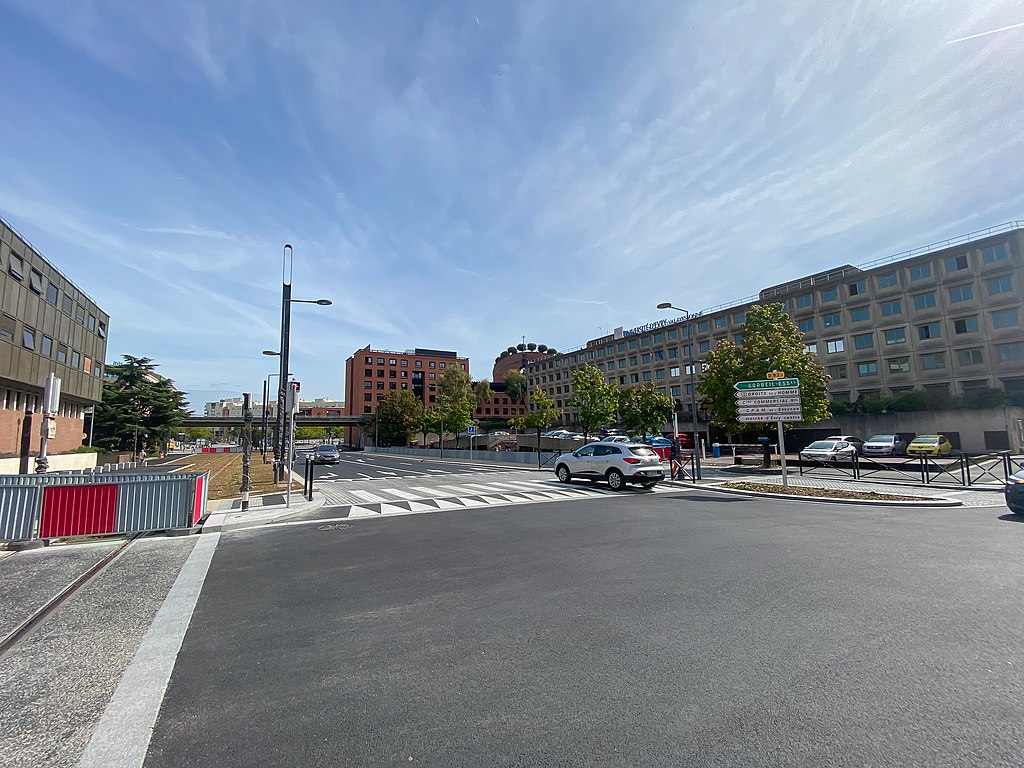 Evry-Courcouronnes, Esson, France (source: poudou99, CC BY-SA 4.0, via Wikimedia Commons)
Evry-Courcouronnes, Esson, France (source: poudou99, CC BY-SA 4.0, via Wikimedia Commons)The network is connected to two geothermal wells drilled to a depth of around 1600 meters. Drilling of the wells was completed back in 2021, after three months of continuous operations. Water is extracted from the Dogger aquifer, where its temperature is approximately 70 degrees Celsius.
The shift of the district heating network to geothermal is said to reduce CO2 emissions by up to 11,000 tonnes each year, or equivalent to having 5000 vehicles withdrawn from circulation. With the geothermal heating plant commissioned, the share of renewable and recovered energy in the urban heating network increased from 55% to 77%.
The project was co-developed by the Grand Paris Sud agglomeration, the city of Évry-Courcouronnes, and Dalkia. It has benefitted from funding support from the State, Ademe (the Ecological Transition Agency), and the Île-de-France.
Officials also emphasized that the geothermal heating network provides stable prices over time. “Geothermal energy allows a relatively stable price and decorrelated as much as possible from fossil fuels”, commented Sylvie Jéhanno, Chairman and CEO of Dalkia.
This sentiment was echoed by Stéphane Beaudet, the Mayor of Évry-Courcouronnes. “Several tens of thousands of people, whether they are residents of social residences, condominiums or employees of offices or companies, will no longer be subject, to a very large extent, to the vagaries of energy costs.”
Greater geothermal utilization in Île-de-France
Valérie Pécresse, President of the regional council of Île-de-France, stated that the region holds the distinction of being the first to develop the value of geothermal in France. Today, the region of Île-de-France represented 87% of the geothermal energy production in France.
Pécresse further announced that a forthcoming study by the Bureau of Geological and Mining Research (BRGM) and Ademe aims to generate precise mapping of the geothermal potential of Île-de-France. This information will enlighten municipalities on whether geothermal is worth developing in their areas, all towards a goal of doubling the production of renewable energy in the region in the next seven years.